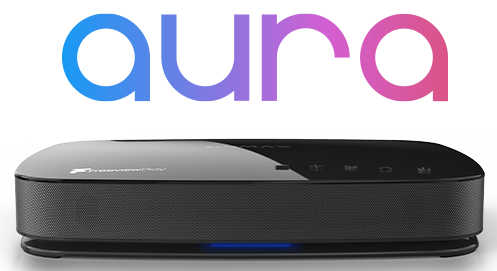Hi folks,
My Humax HDR1100s suddenly died whilst playing a recording - all lights out, no response to remote or buttons.
Have checked power brick - fine 12v output.
Took case off and checked power internally - 5v gets to the HDD SATA connector, so some power working, removed HDD to see if it was causing the problem - no, and looks OK connected to a Windows PC (BTW is there a way of persuading Windows 10 to access the EXT3 partitions on the HDD?)
Removed the heatsink and replaced the thermal paste - though it looked OK.
There is absolutely no sign of blown or overheated components on either side of the board.
Any ideas what to try next?
Thanks,
Geoff
My Humax Forum » Freesat HD » HDR 1000, 1010, 1100S
HDR 1100s sudden death
(11 posts)-
| Mon 18 Jul 2022 13:41:33 #1 |
-
Update: HDR1100s still dead - but have determined that it is drawing about 450mA from the 12v supply - with or without the hard disk fitted - the heatsink is getting mildly warm, but no sign of life - is the Broadcom CPU fried?
Interestingly, I bought an 'Untested" HDR1100s on eBay in the hopes that it may be a suitable donor, but it displays EXACTLY the same symptoms - common problem?
In view of the above, I would like at least to be able to play the recordings from the HDD - it seems to be fine, and I have copied the contents of the "My Videos" folder to my PC, but cannot find anything that will play them.
I did try putting the drive in a USB caddy and attaching it to my FVP-4000T Freeview recorder, but it could not recognise any recordings.
The recordings are in 3 or 4 files .HJM, .HTS, .NTS, and sometimes a .PNG image.
Judging by the size, the .HTS files contain the TS video - but mothing I have tried can make any sense of them - any program/process recommendations to make them playable?Geoff
| Sat 23 Jul 2022 20:08:12 #2 | -
GeoffKurth - 1 hour ago »
Judging by the size, the .HTS files contain the TS video - but mothing I have tried can make any sense of them - any program/process recommendations to make them playable?They are encrypted and unless a way can be found to remove the encryption then they will only play on the box that recorded them.
| Sat 23 Jul 2022 21:55:35 #3 | -
Not very encouraging news Martin - so it looks like a choice between a £70 (possible) repair with digirepairs.co.uk, or attempting to fix it myself.
A little probing with a scope shows no signs of clocks anywhere, so am a little suspicious of the oscillator.
Does anyone know if this is a 10MHz, or a 10.111MHz crystal?| Sun 24 Jul 2022 16:14:09 #4 | -
| Sun 24 Jul 2022 16:15:31 #5 |
-
This is the manufacturer
http://www.jyelectronics.com/product.htm
Good luck in finding a distributer or a datasheet to decode the can markings.
It is probably 10.111MHz but it might not be. Chinese product marking can be inventive.If that device only has 2 pins/tabs then its a crystal almost any would work. Crystal circuits can be hard to fault find as the capacitance of a probe can stop them oscillating.
If it has 4 or more connections it is a stand alone oscillator circuit.
By the look of it is "just" a crystal.
I would start by checking any electrolytic capacitor(s) associated with the crystal circuit.| Sun 24 Jul 2022 17:32:36 #6 | -
Thanks bogbody,
It is just a 2-pin SMD crystal - I might pop in a 10MHz one just to see if anything fires-up.
Will post back.| Sun 24 Jul 2022 20:56:13 #7 | -
It turns out that the main 54MHz clock source for the Broadcom CPU is a 4-pin SMD oscillator hiding just under the heatsink.
Now the good news - MY HDR-1100s IS NOW WORKING !
I suppose the fact that it died on the hottest afternoon on record for the UK should have been a clue - my theory is that in the extreme heat, the heatsink expanded just enough to bend the PCB under the processor to pop a couple of the ball grid array solder ball connections.
If your device is out of warranty, you don't want to spend £70 on a professional fix from digirepair.co.uk, you are ABSOLUTELY sure that the power supply is OK, there are no signs of life whatsoever - no LED's etc., have a hot air gun and a lot of bravery, then this is the fix I applied:
You need to strip the machine right down to the motherboard by...
1. Remove the warranty stickers from the rear top, and beneath the HDD.
2. Unscrew the rear screw, and pop the grey lugs from underneath to release the top of the case.
3. Remove the 4 screws holding the HDD underneath, and the small bracket securing it on the top, remove the HDD.
4. Remove the remaining three screws holding the motherboard in place (one is on ther rear hoilding the RCA sockets in place).
5. Gently lift the motherboard up and forward, whilst sliding the two WiFi antennae up out of their retainers.
6. Place the motherboard on a heat resistant surface, remove the WiFi module by lifting it off the PCB, and remove the three sprung screws retaing the heatsink to expose the CPU. Clean the old thermal compound off the heatsink and CPU.
7. Now the brave/foolish bit - use a heat gun to raise the temperature of the CPU from above for long enough to let the ball grid array solder balls melt just enough to re-connect - I used a 375 degrees C gun at about 4-5 inches above for 30-40 seconds (PCB repair experts - PLEASE update me with recommended temperature and time).
8. Don't apply any pressure, and allow plenty of time to cool before re-assembling the heatsink with some new thermal compound, and WiFi module.
9. Check for life by connecting the Power Supply and observing the Standby LED on the underside.
10. If it is now coming on as it should, re-assemble the whole thing, and see how it is.To reduce the risk of this happening again, I completely spoilt the good looks of the unit by drilling an array of holes in the top of the case above the heatsink - this allows air to be drawn in from the sides and rear, and escape through the top - and it can be clearly felt if I put my hand above these holes.
Please only do this at your own risk, and I may have been very lucky that it worked.
Geoff
| Mon 25 Jul 2022 20:49:37 #8 | -
Ah! The old xbox fix.
Alas I no longer have access to a "re-balling" station.
The only pernament repair is of course to unsolder the BGA, re-ball it and resolder it.
Now-a-days the use of a low temperature tin mix (with silver and a host of other metals) means that an over heating BGA can unsolder itself.| Tue 26 Jul 2022 19:07:54 #9 | -
I must regretfully announce the sad loss of my HDR-1100S.
After having another relapse, it was rushed to hospital, and revived using a hot air gun.
It limped on for another week, before sadly passing away this morning.
As it had an Organ Donor card, it's 500GB HDD is now extending the life of an ageing Foxsat HDR.
RIP.| Fri 12 Aug 2022 19:32:05 #10 |
Reply »
You must log in to post.


